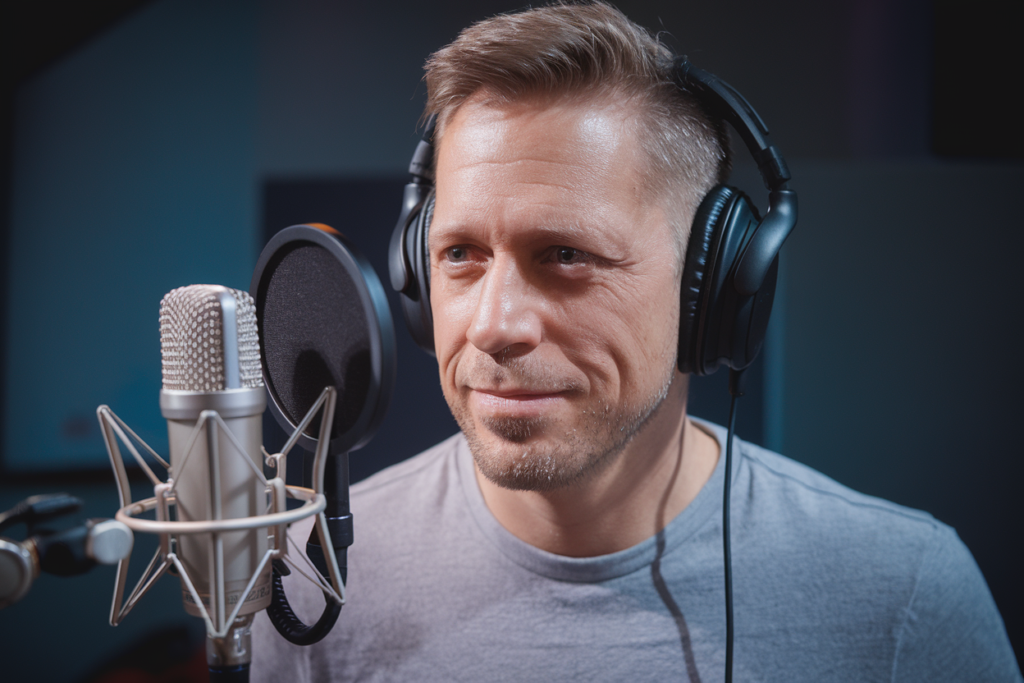Key Takeaways
- Distinct Accents: German and Austrian accents, while both part of the German language, exhibit unique pronunciation and vocabulary characteristics that are essential for accurate voiceover work.
- Pronunciation Variations: Austrians tend to soften consonants and elongate vowels compared to their German counterparts, affecting emotional tone in voiceovers.
- Cultural Vocabulary Differences: Regional expressions like “Jause” (Austrian) versus “Imbiss” (German) enrich voiceovers with authenticity and local flavor, crucial for audience connection.
- Audience Perception: Understanding how accents influence audience perception helps choose the right voice talent, enhancing trust and engagement in projects targeting specific demographics.
- Training Techniques: Voice actors should engage in specialized training focused on accent nuances through shadowing, recording practice, and dialogue exercises to master both accents effectively.
- Impact on Delivery Style: Cultural nuances dictate delivery styles; recognizing these can significantly enhance emotional responses from audiences during voiceover performances.
Ever wondered why German and Austrian accents sound so different, even when they’re speaking the same language? If you’re diving into voiceover work or just curious about these unique dialects, understanding their nuances can make a huge difference.
Overview of German and Austrian Accents
German and Austrian accents showcase distinct characteristics, even though both originate from the same language. Understanding these differences proves essential, especially for voice talents aiming to deliver authentic performances.
Definition of Accents
Accents refer to variations in pronunciation that occur within a language. In German, regional dialects influence how words sound. For instance, the Bavarian accent in Austria differs significantly from the Hochdeutsch (Standard German) spoken in northern Germany. Recognizing these nuances helps voice artists portray characters accurately or convey messages effectively.
Importance in Voiceover
Accurate representation of accents enhances authenticity in voiceovers. Clients often seek voice actors who can embody specific regional traits to resonate with target audiences. By mastering both German and Austrian accents, you increase your versatility as a voice over talent. This skill not only broadens your opportunities but also elevates the quality of your work, making it more appealing to potential clients looking for genuine connections with their listeners.
Key Differences Between Accents
Understanding the key differences between German and Austrian accents enhances your ability to choose the right voice talent for specific projects. These nuances can significantly impact how audiences perceive a voiceover, making it essential for effective communication.
Pronunciation Variations
Pronunciation marks one of the most noticeable distinctions. In general, Austrians tend to soften their consonants more than Germans do. For example, the “k” sound often becomes less harsh in Austrian dialects. Additionally, vowel sounds can differ; Austrians may elongate vowels compared to their German counterparts. This variation affects how characters or narratives come across in voiceovers, emphasizing emotional undertones or cultural contexts.
Vocabulary Distinctions
Vocabulary also sets these accents apart. While both groups use Standard German as a base, regional expressions often creep into everyday language in Austria. Words like “Jause” (snack) are common in Austria but not typically used in Germany, where “Imbiss” is preferred. Such differences enrich voiceovers by providing authenticity and local flavor that resonate with target audiences. Adapting vocabulary appropriately demonstrates an understanding of cultural context—crucial for any successful voice actor aiming to connect deeply with listeners.
By recognizing these differences, you enhance your skills as a voice artist or select the ideal voice over talent who embodies the desired accent characteristics for your project.
Impact on Voiceover Work
Understanding the impact of German and Austrian accents is essential for voiceover work. Accents can influence how audiences perceive a narrative, making it crucial to select the right voice talent for your project.
Audience Perception
Audience perception hinges on accent familiarity. When a voice actor uses an accent that aligns with their audience’s expectations, it fosters trust and connection. For instance, using an Austrian accent in promotional materials targeting an Austrian demographic creates authenticity. On the other hand, employing a standard German accent might resonate better with northern German listeners. The right choice enhances engagement and ensures your message lands effectively.
Cultural Nuances in Delivery
Cultural nuances play a significant role in delivery style. Each region carries specific expressions and tones that reflect its culture. An Austrian voice artist might deliver lines with softer consonants and elongated vowels, conveying warmth and approachability. In contrast, a German voice actor might adopt a more direct tone associated with Hochdeutsch. Recognizing these differences aids in selecting the best voice over talent to evoke the desired emotional response from your audience.
By considering these elements—audience perception and cultural nuances—you can elevate your project’s impact through effective use of accents in voiceovers.
Techniques for Adapting to Accents
Adapting to different accents is crucial for voice actors aiming to connect with diverse audiences. Mastering the subtleties of German and Austrian accents enhances your performance, making it more relatable and authentic.
Training Recommendations
Engage in targeted training that focuses on accent nuances. Look for workshops or courses specifically designed for voice artists that emphasize dialects and regional speech patterns. Listening exercises can also be beneficial; immerse yourself in audio samples from native speakers. Pay attention to vowel elongation, consonant softening, and unique vocabulary terms used in each region. This practice sharpens your ear and helps refine your delivery.
Practical Exercises
Incorporate practical exercises into your routine to solidify your accent skills. Here are some effective methods:
- Shadowing: Mimic recordings of native speakers while paying close attention to pronunciation.
- Recording Yourself: Record short passages using the target accent, then listen back for self-evaluation.
- Dialogue Practice: Engage in conversations with fluent speakers or fellow voice actors who can provide feedback.
- Accent Challenges: Set daily challenges where you read scripts or perform monologues in different accents.
These exercises not only improve your ability but also build confidence as a voice over artist adapting to various roles effectively. By incorporating these techniques, you enhance both your skill set and appeal as a versatile voice talent ready for any project requiring specific regional characteristics.
Conclusion
Understanding the differences between German and Austrian accents is essential for anyone in the voiceover industry. By grasping these nuances you can enhance your performances and connect more deeply with your audience.
Mastering pronunciation variations vocabulary distinctions and cultural nuances not only enriches your voiceovers but also builds trust with listeners. Ultimately investing time in training and practice will set you apart as a versatile voice artist capable of delivering authentic regional representations.
So embrace these accents explore their subtleties and watch how they elevate your work to new heights.
Frequently Asked Questions
What are the main differences between German and Austrian accents?
The primary differences lie in pronunciation and vocabulary. Austrians tend to soften consonants and elongate vowels compared to Germans. Additionally, certain words differ; for instance, “Jause” means snack in Austria, while Germans use “Imbiss.”
Why is understanding these accents important for voiceover work?
Understanding these accents is crucial for voiceover artists as clients often seek specific regional traits to resonate with target audiences. Accurate representation enhances authenticity and improves emotional connection in narratives.
How do cultural nuances affect voice delivery styles?
Cultural nuances influence expression and tone, which can vary significantly between regions. Recognizing these subtleties helps voice actors deliver performances that align with audience expectations, fostering trust and engagement.
What techniques can help master German and Austrian accents?
Voice actors can improve their accent skills through targeted training like dialect workshops, listening exercises to absorb native speech patterns, shadowing native speakers, recording practice sessions, and engaging in dialogue practice.
Can accents impact audience perception?
Yes, accents play a significant role in how audiences perceive content. Using an accent familiar to the audience fosters a sense of connection and trust, making it essential for effective communication in voiceover projects.







